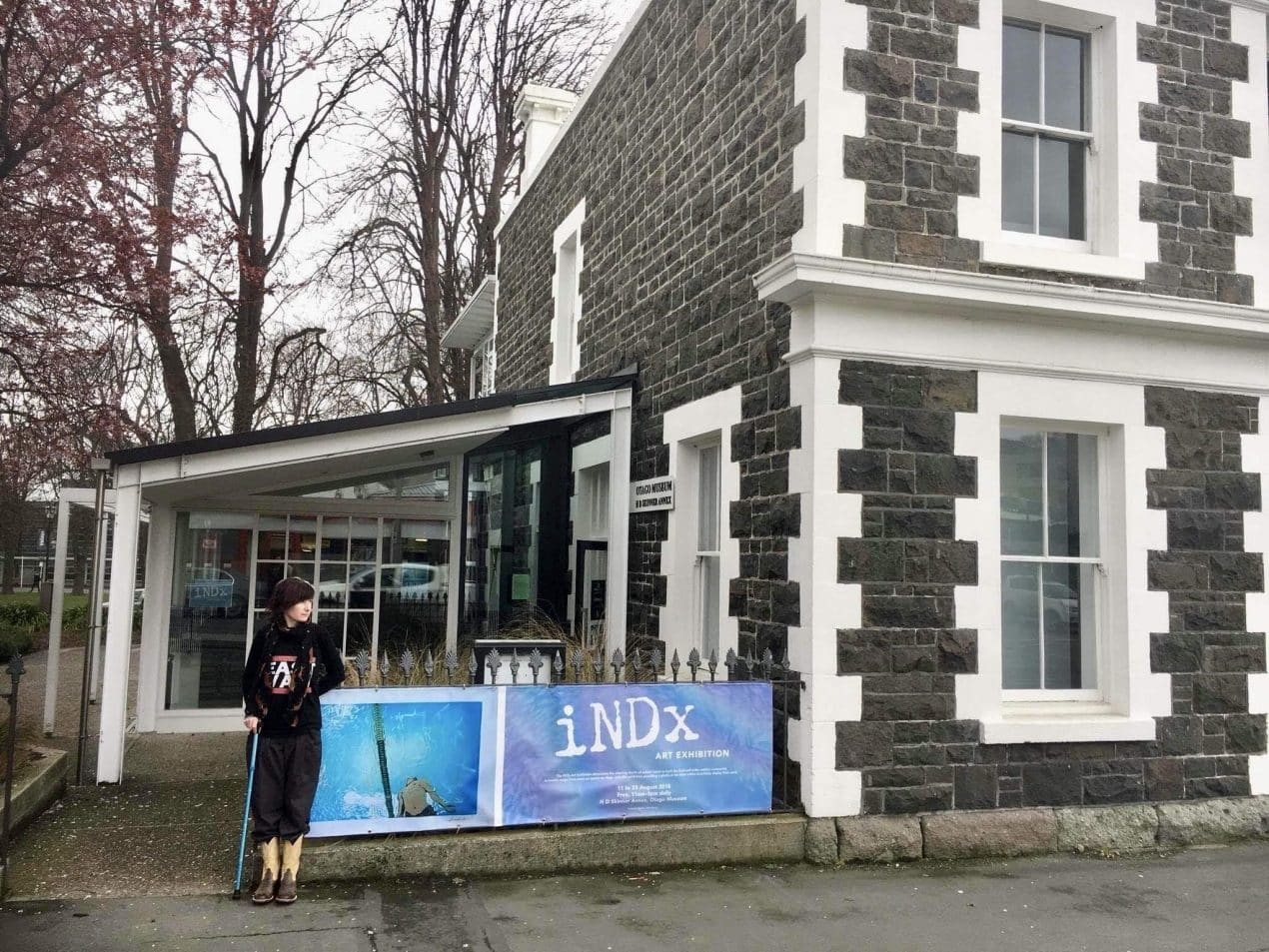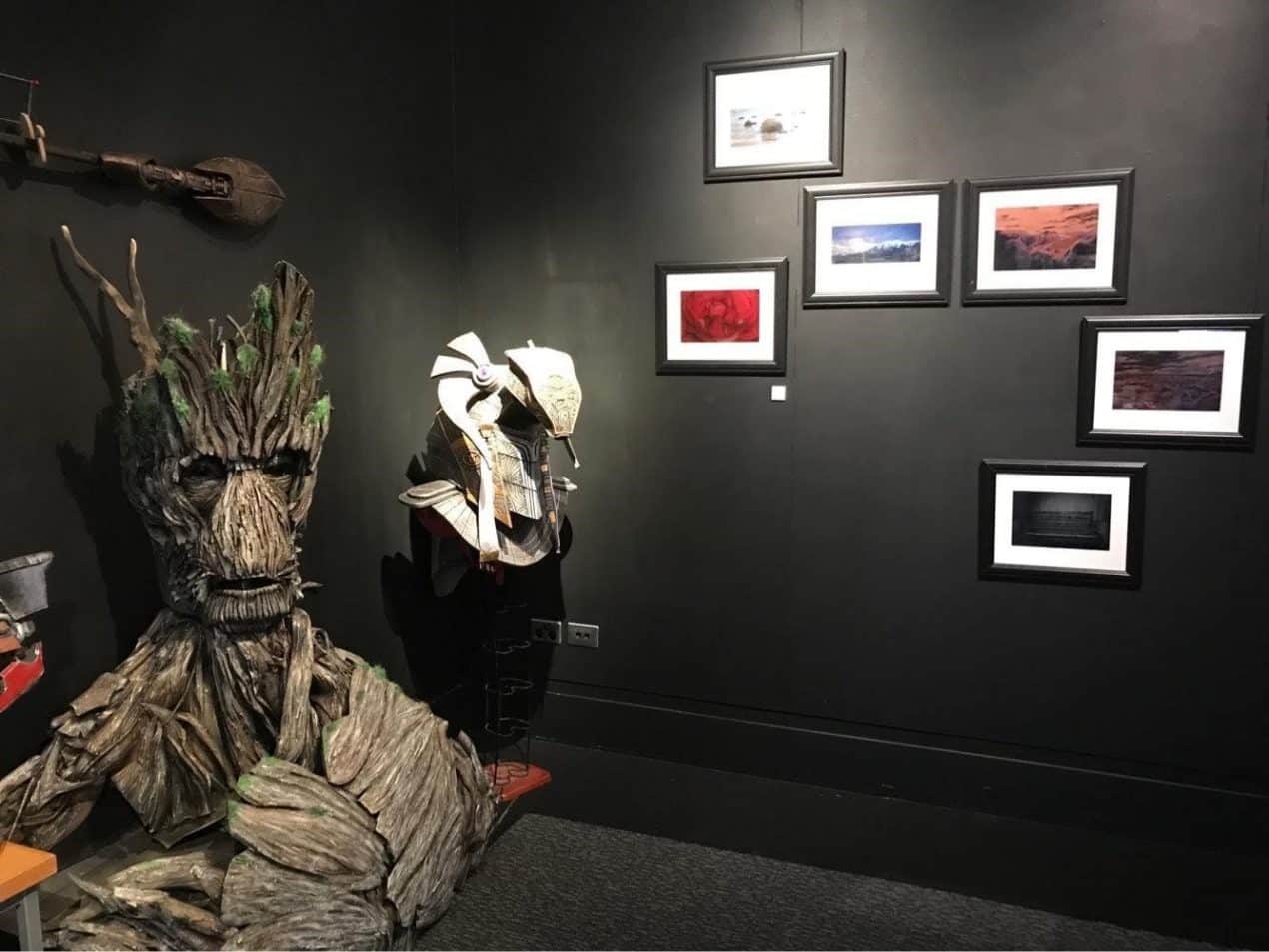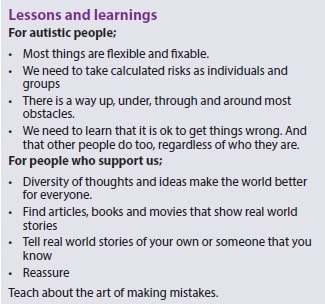26 November 2018 – When Tanea Paterson accepted an offer of help from Otago Museum, it was a monumental step for her as an autistic person. She explains why.
AUTISM MEANS differences in how we observe, receive, and process information.
We have unique differences in our social structures and functions. We have differences in how we communicate and use spoken and non-spoken language. These things all have powerful effect on how we interpret the world and each other. It can be challenging for autistic people to express their true selves to non-autistic people. Ergo, we are not always interpreted accurately.
There are misunderstandings ranging from fairly minor, to overwhelmingly serious. To an autistic person, whose world may not feature a large range of human interaction, even the ‘fairly minor’ misunderstandings can have major effect.
The most common being withdrawal, isolation and inertia. There are many things autistic people want to do, how do we get past the fear of being misunderstood and/or getting things wrong? I find it extraordinarily difficult to ask for help, furthermore if help is offered, regardless of if I need it, I often turn it down. Why would I do that? Because I find my needs hard to explain and I don’t want to take the risk of that being misunderstood. I also suspect the person, with obvious good intentions, may not be able to ‘do it’ how I want ‘it’ done. Remember when you were little, your carer saying – ‘I’ll just do it myself, then
I know it will be done properly.”
We may feel confused if our communication is misinterpreted, we may feel guilty for taking another person’s time or we may feel so disappointed in ourselves for not being able to ‘do it right, without help’ that we’d rather just leave it.
Sometime that means ignoring an offer of help, is it embarrassment or perfectionism? You may turn down a meal and go hungry, because what if the food was yuck, and last time you made yourself ill eating someone else’s food. All because you didn’t want them to feel bad if you said you didn’t like it. Maybe you walked home in the rain because you felt guilty about the five kilometre diversion the vehicle owner would have to take to get you to your address.
It can be overwhelming to take someone up on their offer, or ‘give something a go’. The fear of being seen as a manipulator, something autistic people get accused of a fair bit, or getting things wrong, can be too much to even contemplate. Fear and anxiety, whether situational or physiological (hence the vagus nerve title) or both, are the main drivers, autopilots and well the entire pit crew too. Instead of leading the motivation for movement, which is the intention our mammalian brain has, they often serve to divert them to the nearest warm, dark cocoon. Safety of course is always THE most important thing, however so is building self-efficacy through autistic representation.
OFFER OF HELP ACCEPTED
This year, I said yes to an epic offer of help. One that didn’t just involve me, three people I am close with, the iNDx crew, also took on something I said yes to. And 28 more people joined us. I said yes to the offer of help from the Otago Museum. A place I had known my entire life, that I felt the same kind of connection with as I would a wise kaumatua or kuia. This particular ‘yes, thank you’ was intense.
I can’t explain the fear I had being offered a space for our idea of an Autistic Art Show. I have Ehlers Danlos Syndrome and have been very unwell and immobile for sometime.
Going from fairly active, to bedridden is extraordinarily challenging, it was affecting my mental health quite badly. I felt stuck and scared. And to be brutally honest I felt helpless and useless.
It is an understatement to say I ‘needed’ a project, this really couldn’t have come at a better time. Although I could have said no, my basic survival instinct did the math and the benefits out-weighed the risks.
I know there are many other autistic people like me, who have ideas, projects, dreams. I know many feel stuck, in so much as they need others to help them make their ideas a reality. This makes me feel sad for all of the wonderful things they, and we may be missing out on. I was fortunate to have met people offered the help. People who were willing to allow me and my team to make the decisions, guide the process and do it ‘our autistic way’, no matter how different that was from the ‘typical way’.
I want to let other autistic people know sometimes things that seem unachievable, might just be possible. If you can peak past the crippling fear and say ‘yes please help’. And just as importantly, to those supporting autistic people to give them opportunities to do things in their way. It may
‘look different’ and that is the point. We need different in our society, or how do we progress?
“If ‘independence’ as the ‘ultimate goal’ why do others speak for us, make decisions for us? Walk beside us, comfort us when things don’t go exactly to plan. Our process may seem strange with its timing and sequence, if you are not afraid, we won’t be (as afraid) either.”

This is what the Otago Museum did for us. The trust they had in us to manage this project really was what made it possible. Them trusting us helped us to trust ourselves.
We hadn’t done anything like this before, it was a ‘see how it goes’ situation. Potentially the biggest challenge was within ourselves, faced with an uncertain process. We really had to use our passion and excitement for the project as a buffer to the sheer terror and anxiety of ‘what if’s’.
Rachel, our main contact from the Otago Museum was absolutely respectful to our decisions. Rachel supported us without influencing decision making and by doing so fully respected our autistic led kaupapa.
There was no, “what are you doing that for?” or “how about you do it like this”.
The iNDx crew didn’t have a clear step by step map to follow, which is extremely challenging as autistic people. We did amazingly well at supporting each other, when we all had moments of uncertainty or confusion. The camaraderie and teamwork of iNDx, as well as having Rachel and Craig nearby to answer our questions, but not force ideas on us is what made is possible.
The museum staff were open to learning about autism which led to wider social understanding. They organised ‘quiet hours’ in the main museum areas to widen access and promote understanding of sensory differences in autism. This project went beyond an art exhibition.
By taking on this project, I personally learned so much. I learned that I could organise quite a lot from my bed, thus I may not be so helpless or hopeless after all. Our many artists taught me a lot about taking risks. They taught me about trust, and about embracing anxiety as excitement, as opposed to fear. This was the first all autistic led project I have been involved with. I learned that autistic led projects are extremely important to be promoted, embraced and encouraged.

Autistic people involved and their whanau, our entire community, the wider community, the museum staff who were keen to learn new ways to interact with autistic people and the kid who went home afterwards to ‘study’ the booklet of biographies.
We ended up with a total of 28 artists and another four autistic advocates (three from overseas) who participated by allowing us to screen their films. We proudly turned no artist away, although the curators had the unenviable task of filtering a few pieces out due to space constraints!! Every artist who submitted work had at least one, sometimes multiple pieces on display.
The connections that were made through the exhibition that wouldn’t have otherwise connected were invaluable. The autistic community tends to have few ‘social events’. The entire process can be overwhelming and over stimulating. We need extra time to prepare and time to recover. There is often a need to have a purpose or a central theme and focus to bring autistic people together. The iNDx art exhibition gave our group that. Many had never met before and may not have ‘in person’, however we were all connected by being a part of this project.
It gave the artists a sense of self efficacy, identity and pride. We also asked this of the editing and communications team at the Otago Museum.
We would like for the bios to remain as authentic to the individual as they presently are. We understand the format is not ‘traditional’ or streamlined, however we think that adds to the theme of the Exhibition.
Individuality, appreciation for autonomy and a celebration of how diverse and unique autistic people are.
We also have a couple of limited speaking artists and their support persons didn’t feel comfortable writing words on their behalf.
We would rather the artist didn’t see a ‘reframed’ ‘edited’ bio and description and feel that someone thought they needed changed to ‘fit in’. This is the opposite to what our intentions for the show are.
We held workshops over the weekends where we had open dialogue about all things autism. For some it was the first time meeting other autistic people in real life. It gave people the ability to ask ‘sticky’ questions and to connect with other people like themselves.
The sense of shared identity and comradery and developed ongoing relationships. These things have deep meaning for our often isolated group.
I wanted to share some things that helped me to achieve this, hopefully they can also help others to achieve their plans, no matter what they are.
- The vagus nerve is the longest of the 12 cranial nerves.
- iNDx represents : i = identity, ND = neurodivergent, in capitas to represent importance, Dx = diagnosis and is representing the shorthand abbreviation for diagnosis.
- Tanea Paterson is a substance use practitioner/counsellor.
- This article appeared in the Altogether Autism Journal, Issue 3 2018






